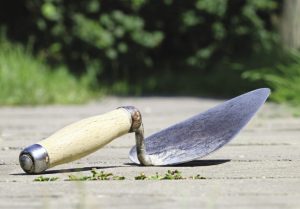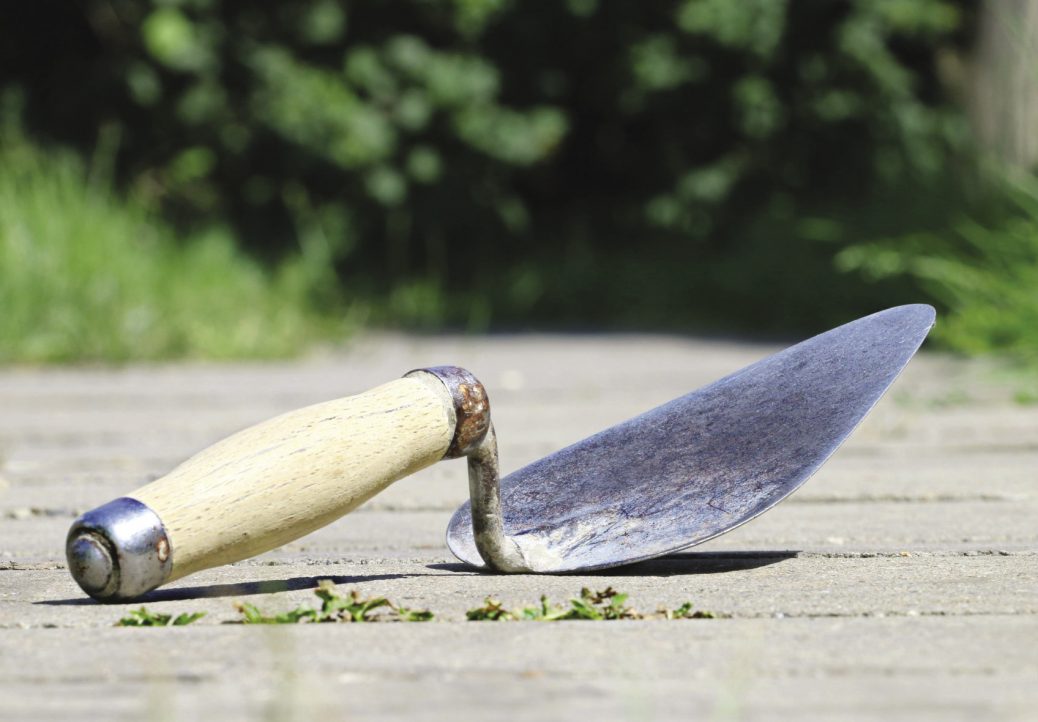By Tom Kovach
A few minutes spent sharpening garden tools can save hours in the garden. Sharp tools make work easier and safer. A sharp hoe can quickly cut through soil to sever a weed. But a dull hoe will take more effort and may not do as good a job as a sharp hoe does. This holds true for all garden tools. You also keep your plants more healthy with sharp tools. Dull gardening shears can split and tear stems, opening them to infection. Sharp shears make clean cuts that heal quickly.

The basic instruments for sharpening garden tools, are files, whetstones, and grinders. Hand files are available at garden centers and hardware stores and are sold according to how coarse they are. Buy several types to sharpen a variety of tools, such as spades and hoes.
Power grinders quickly sharpen tools, but remove a great deal of metal and can be tricky to use. For the home gardener, a hand file is usually easier to handle and use for periodic sharpening. Larger, heavier garden tools are best sharpened on a grinder by a professional.
Whetstones are porous stones that provide extremely sharp edges on tools. The flat stone needs enough oil to work well. Soak a new stone in oil until it thoroughly absorbs the liquid. Then store in a zip-lock plastic bag. Shears and knives are ideal for sharpening with a whetstone.
Common tools for sharpening
Garden spade: Squared edges must be able to cut roots and create edges in beds. Benefits from yearly touch-up sharpening to maintain a double-beveled edge.
Shovel: Round, square, or pointed edges need to be sharp for ease of use. Most are forged or stamped, and self-sharpen from the action of digging.
Grass clippers: Blades must have sharp edges to avoid binding, making clipping harder. Need an occasional, light whetstone sharpening; follow outside bevel.
Hoe: Blade must be able to smoothly chop weeds and cut through the soil. Sharpen to mild angle, or severe angle for chopping through hard ground.
Pruning saw: Curved or straight saw blades must move smoothly to cut limbs. Use a knife file and file to the bevel pattern; file one side and then the other.
Pruning shears: Curved cutting blade needs regular sharpening to make clean cuts. Use a fine hand file, carefully filing the blade to a sharp edge.
Seasonal tips
Early Spring: As plants begin to grow, sharpen tools that you will need to use for basic garden chores. Buy a set of three to five files. Buy plastic or wood handles to make the files easier to use.
Summer: Make sharpening dull tools an integral part of your ongoing garden routine. If tools do not hold an edge, or seem to need sharpening after every use, it may be a sign that you need to replace them.
Late Fall: After their final use, clean tools of rust or dirt. Use this opportunity to check that handles on shovels or hoes are secure. Sharpen the tools one last time, oil as necessary, and store garden tools in a dry place.
Tools with moving parts need lubrication. A general machine oil will not only help the tool to work smoothly, it will protect metal parts from rust. Apply a few drops of oil or a lubricating spray to moving parts of shears and other tools each time you sharpen.
And remember: Misuse of garden tools is the fastest way to dull a sharp tool. Some actions such as dropping a tool on concrete or using a hoe to break through rock, will quickly dull the tool. If you use garden tools for their intended purposes and maintain them properly, they will keep their sharp edges much longer.


Great post on sharpening! I’ve never sharpened a tool, but today was too much work with dull tools! I’m a women and not great with my coordination. Thank you so so much for a wonderful helpful post. You make it look so easy. Thank you!